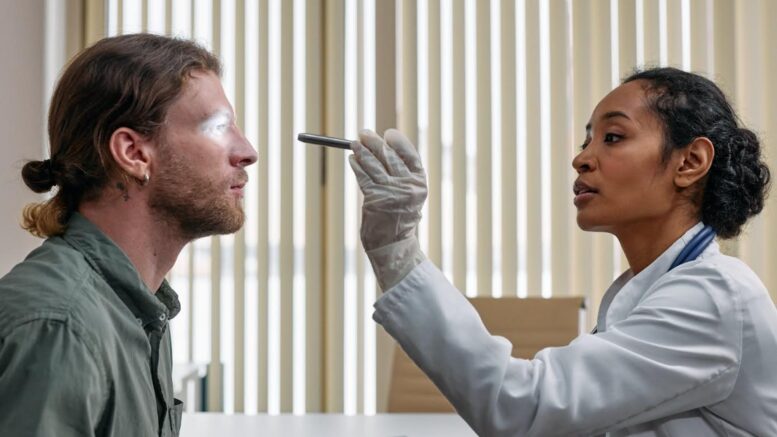The frequent age-related disease known as presbyopia impairs the eye’s ability to concentrate on near objects. Presbyopia is a condition caused by natural aging that usually manifests around the age of 40. It affects the crystalline lens’s flexibility and the eye muscles’ efficiency.
Changes in Near Vision
Presbyopia alters near vision, which has a substantial negative influence on general eye health. People find it difficult to read, knit, or use a smartphone when their crystalline lens, which oversees focusing on close objects, becomes less flexible. It becomes important to identify this change in visual acuity since it is a precursor to presbyopia and necessitates modifying daily activities and routines. The changes in near vision that come with age become increasingly noticeable, which emphasizes the necessity for remedial actions and adaptive techniques to maintain functioning in jobs requiring close inspection. It becomes essential to have regular eye exams to track and treat the gradual changes and enable prompt actions to preserve the best possible quality of vision.
Increased Eye Strain and Discomfort
Presbyopia frequently results in increased eye strain and pain, especially while doing jobs that require extended attention to close objects. People may experience symptoms including weariness, dry eyes, and headaches because of the eye muscles straining to compensate for the lens’s decreased flexibility. Beyond the eyes, the ensuing discomfort affects the surrounding areas, making preventative measures for relief necessary. To address these symptoms and lessen the overall negative effects of presbyopia on visual health, a multimodal strategy involving lifestyle modifications, customized eyeglasses, and ergonomic adjustments is needed. They are understanding how overall health and eye health are intertwined highlights the need for comprehensive treatment in addressing the difficulties brought on by presbyopia.
Altered Depth Perception
Changes in depth perception brought about by presbyopia impact tasks requiring accurate distance estimation, such as driving or stair climbing. Accurately detecting depth is difficult, which highlights how presbyopia affects visual function in general and not only in close-up activities. Corrective lenses can improve near vision, but other measures, including mental exercises or adaptive technology, could be needed to adjust to changes in depth perception. As people navigate an environment that may look different owing to the impacts of presbyopia, proactive efforts in addressing changed depth perception help to preserve safety and inspire confidence in them.
Need for Increased Lighting
Presbyopia is a changing condition that causes people to look for lighter when performing different jobs to make up for their decreased ability to focus on near things, a phenomenon often observed as individuals explore options such as pie eye surgery. Inadequate illumination makes it harder to conduct daily tasks because it causes eye strain and pain. Making sure there is enough light becomes essential to controlling presbyopia, promoting ideal vision, and reducing related difficulties. To create an atmosphere that supports comfort and efficiency in everyday operations while accommodating the changing visual demands associated with presbyopia, it is essential to integrate adaptable lighting solutions and strategically situate light sources.
Impact on Quality of Life
Presbyopia has a substantial impact on a person’s general quality of life in addition to the physical elements of eyesight. The difficulties associated with close vision tasks might limit the amount of time spent on things that one formerly loved, such as reading, hobbies, or work-related duties. Presbyopia’s impacts need lifestyle modifications and preventative actions to maintain an active and satisfying life, underscoring the significance of early identification and customized therapies for long-term visual well-being. The importance of a comprehensive approach to vision care is highlighted by highlighting the social and psychological challenges of living with presbyopia. This ensures that people not only maintain a clear vision but also actively engage in activities that lead to a happy and meaningful life.
Conclusion
For those starting their 40s and older, it is crucial to comprehend how presbyopia impacts general eye health. To enable the use of corrective treatments like reading spectacles, multifocal glasses, or contact lenses, routine eye exams become essential for early detection. Preventive eye care practices can help manage the effects of presbyopia and maintain long-term visual health, even though it is a normal part of aging.
